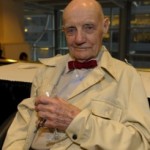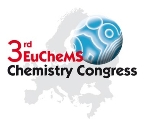The latest most downloaded Analyst articles
Read the most-read papers of July 2010 here:
Instantaneous chemical profiles of banknotes by ambient mass spectrometry
Livia S. Eberlin, Renato Haddad, Ramon C. Sarabia Neto, Ricardo G. Cosso, Denison R. J. Maia, Adriano O. Maldaner, Jorge Jardim Zacca, Gustavo B. Sanvido, Wanderson Romão, Boniek G. Vaz, Demian R. Ifa, Allison Dill, R. Graham Cooks and Marcos N. Eberlin, Analyst, 2010
DOI: 10.1039/c0an00243g
Thick-film textile-based amperometric sensors and biosensors
Yang-Li Yang, Min-Chieh Chuang, Shyh-Liang Lou and Joseph Wang, Analyst, 2010, 135, 1230
DOI: 10.1039/b926339j
Analytical methods to assess nanoparticle toxicity
Bryce J. Marquis, Sara A. Love, Katherine L. Braun and Christy L. Haynes, Analyst, 2009, 134, 425
DOI: 10.1039/b818082b
Upconversion nanoparticles in biological labeling, imaging, and therapy
Feng Wang, Debapriya Banerjee, Yongsheng Liu, Xueyuan Chen, Xiaogang Liu, Analyst, 2010, 135, 1839
DOI: 10.1039/c0an00144a
Analytical strategies for detecting nanoparticle–protein interactions
Liwen Li, Qingxin Mu, Bin Zhang and Bing Yan, Analyst, 2010, 135, 1519
DOI: 10.1039/c0an00075b
Bioactive paper dipstick sensors for acetylcholinesterase inhibitors based on sol–gel/enzyme/gold nanoparticle composites
Roger E. Luckham and John D. Brennan, Analyst, 2010, 135, 2028
DOI: 10.1039/c0an00283f















